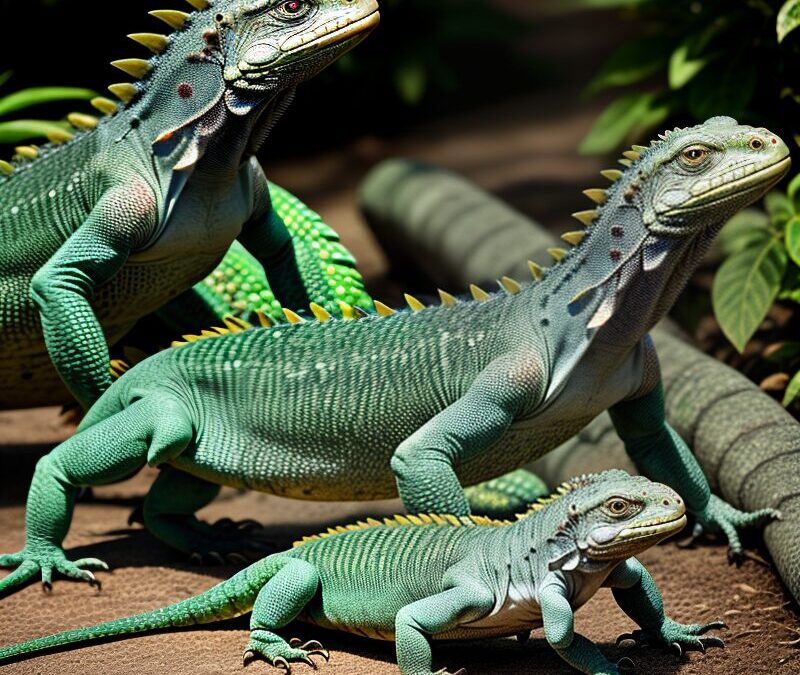Discover the Fascinating World of Iguanas
Explore the unique characteristics and vital ecological roles of iguanas in the Caribbean.
Native Habitat
Ecological Importance
Lifespan & Care
Meet the Iguana
Introduction to Iguanas

Iguanas are native to Central and South America, thriving in the Caribbean climate, including St. Vincent and the Grenadines. They play a crucial role in the local ecosystem by aiding in seed dispersal and promoting plant growth. Female iguanas lay eggs that incubate for about 65-115 days, depending on the species. In the wild, iguanas can live 10-20 years, and even longer in captivity with proper care. Hatchlings are independent immediately but start with a diet of vegetation and small insects. Primarily herbivorous, iguanas consume leaves, flowers, and fruits, requiring a diet rich in leafy greens, vegetables, and occasional fruits in captivity.
Understanding Iguanas
Males are generally larger and more colorful than females, with distinctive dewlaps and more prominent dorsal spines. Females are smaller and less vibrant. In captivity, iguanas need large enclosures with access to UV light, climbing branches, and a diet that mimics their natural food sources. Proper care, including a suitable habitat and diet, can significantly extend their lifespan.
Interesting facts about iguanas include their third parietal eye, which detects light changes to help evade predators, their excellent swimming ability, and their strong tail used for defense. Iguanas communicate through head bobs and dewlap displays. They require a well-maintained environment to thrive in captivity, ensuring they live long and healthy lives.
Fascinating Iguana Facts
Discover the World of Iguanas
Iguanas are remarkable reptiles known for their distinctive features and behaviors. Native to Central and South America, these creatures have also found a home in the Caribbean, including St. Vincent and the Grenadines. Iguanas play a vital role in their ecosystems by aiding in seed dispersal and promoting plant growth. One of their unique traits is the third parietal eye on top of their heads, which helps them detect light changes and evade predators. Iguanas are also excellent swimmers, capable of staying submerged for up to 30 minutes. Their diet primarily consists of leaves, flowers, and fruits, making them essential for maintaining the balance of their habitats.
Male iguanas are generally larger and more colorful than females, featuring distinctive dewlaps and prominent dorsal spines. Females, while smaller and less vibrant, are equally fascinating. Iguanas have a strong tail used for defense, which can detach and regrow if grabbed by a predator. They communicate through head bobs and dewlap displays, adding to their intriguing behavior. In captivity, iguanas require large enclosures with access to UV light, climbing branches, and a diet that mimics their natural food sources. Proper care can significantly extend their lifespan, allowing them to thrive for many years.
Explore Our Iguana Image Gallery
Vibrant Images of Iguanas and Their Habitat
Join Our Interactive Iguana Activities!
We invite you to dive into the world of iguanas through our engaging interactive elements designed for kids. Participate in fun activities such as iguana crafts, nature walks, diet demonstrations, and story time sessions. These activities are not only entertaining but also educational, offering a hands-on learning experience about these incredible reptiles and their role in the ecosystem. Don’t miss out on the opportunity to explore and learn more about iguanas in a fun and interactive way!






